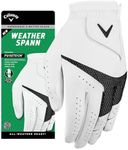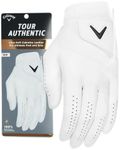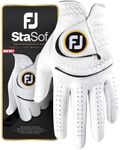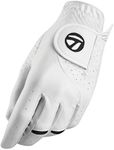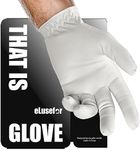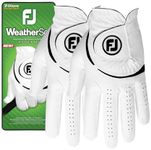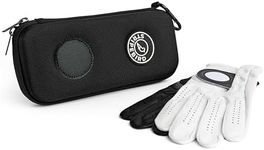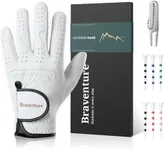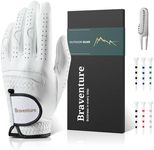Buying Guide for the Best Golf Gloves
Choosing the right golf glove can significantly improve your game by providing better grip, comfort, and control. When selecting a golf glove, it's important to consider several key specifications to ensure you get the best fit for your needs. Here are the main factors to consider when picking a golf glove.MaterialGolf gloves are typically made from leather, synthetic materials, or a combination of both. Leather gloves offer a soft feel and excellent grip, making them a popular choice among many golfers. However, they can wear out faster and may not perform well in wet conditions. Synthetic gloves are more durable and often more affordable, but they may not provide the same level of comfort and feel as leather. Combination gloves aim to offer the best of both worlds, with leather in key areas for grip and synthetic materials for durability. Choose a material based on your preference for feel, durability, and the typical weather conditions you play in.
FitThe fit of a golf glove is crucial for comfort and performance. A glove that is too tight can restrict movement and cause discomfort, while one that is too loose can affect your grip on the club. Golf gloves should fit snugly without being overly tight, with no excess material at the fingertips. When trying on gloves, make sure you can comfortably close your hand into a fist. Consider trying on different sizes and brands to find the best fit for your hand shape and size.
GripThe grip of a golf glove is essential for maintaining control of the club during your swing. Gloves with textured or tacky surfaces can enhance grip, especially in wet or humid conditions. Some gloves also feature additional grip pads in high-wear areas. If you often play in varying weather conditions, look for gloves that offer good grip in both dry and wet environments. Your choice should be guided by how much grip you need and the typical conditions you play in.
BreathabilityBreathability is important to keep your hands cool and dry during play. Gloves with perforations or mesh panels can improve airflow and reduce sweating. This is particularly important if you play in hot or humid climates. A breathable glove can help prevent your hands from becoming slippery, ensuring a consistent grip throughout your game. Consider how much ventilation you need based on the climate you usually play in.
DurabilityDurability refers to how long a golf glove will last before it needs to be replaced. Leather gloves tend to wear out faster than synthetic ones, especially if used frequently. However, some high-quality leather gloves are designed to be more durable. Synthetic gloves generally offer better longevity and are more resistant to wear and tear. If you play golf often, you might prefer a more durable glove to avoid frequent replacements. Think about how often you play and how much wear and tear your gloves will endure.
Weather ResistanceWeather resistance is an important factor if you play in varying weather conditions. Some gloves are designed specifically for wet weather, with materials that maintain grip even when wet. Others are made for cold weather, with added insulation to keep your hands warm. If you play in a range of conditions, you might consider having different gloves for different weather. Choose a glove that matches the typical weather conditions you encounter on the course.
